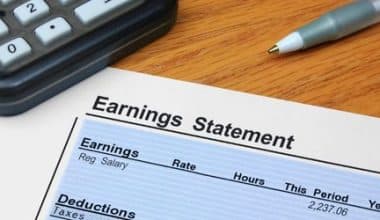If you own a business and want to save for retirement, consider establishing a simplified employee pension individual retirement account. The SEP IRA rules can assist you and your employees in saving for the future. This article will explain Sep IRA rules for withdrawal, contributions, rules for employees, and Sep IRA contribution limits.
Overview
A Simplified Employee Pension Individual Retirement Arrangement (SEP-IRA) is a type of Individual Retirement Account (IRA) popular in the United States. Business owners use SEP IRAs to provide retirement benefits for themselves and their employees. Furthermore, a self-employed person with no employees incurs no significant administrative costs. If the self-employed person has employees, all employees under a SEP plan must receive the same benefits. The reason is that the SEP-IRAs are IRAs, and funds can be invested similarly to most other IRAs.
Sep IRA Rules
It’s a popular retirement investment vehicle for small businesses and self-employed individuals. SEP is an abbreviation for “simplified employee pension,” and an IRA is an abbreviation for “individual retirement accounts.” You can establish a SEP-IRA regardless of whether your business is a sole proprietorship, partnership, or corporation. Furthermore, if you are not a business owner or self-employed person earning contract-based income, you cannot independently establish or contribute to one.
If you work for a company that offers a SEP IRA, your employer must contribute the same percentage of salary to your SEP IRA as it does to the SEP IRAs of all other eligible employees.
Here Are Some of the Rules
- All employees, including yourself, must contribute the same percentage. If your employer pays 20% of your earnings to your SEP account, it must likewise contribute 20% of each employee’s earnings to their personal SEP accounts.
- Employees are unable to make additional contributions to their SEP accounts; their contributions are of limit to the percentage specified by the company.
- Even if an employee quits your company before the conclusion of the plan period, you must continue to contribute to their SEP account. They must provide the same percentage as the rest of your employees.
- Your business may deduct payments made to the employee SEP account. The Internal Revenue Service (IRS) has more information on limits and allowances.
- Both the assets and the account holders are ineligible to borrow money from the SEP-IRA.
If you do not meet up with these measures, your employer may still choose to contribute to a SEP-IRA on your behalf if both the employer and all employees are subject to the less stringent policies of the employer.
Sep IRA Rules for Withdrawal
Highly qualified professionals have a wide range of potential employers to choose from. They also prefer companies that value their employees. While more complicated corporate retirement programs are frequently too expensive for small and medium-sized businesses, employers can still contribute to employees’ retirement savings through a Simplified Employee Pension Plan Individual Retirement Account (SEP-IRA).
Staff members benefit from greater flexibility in the event of a financial emergency because SEP-IRA distribution rules allow account holders to withdraw funds at any time. The Sep IRA withdrawal rules state that participants can withdraw funds from their SEP IRA at any time without having to show proof of financial hardship. Withdrawals before a certain age are referred to as “early distributions” and may be penalized. Sep IRA withdrawal rules allow you to make withdrawals at a certain age
Contributions to Sep IRA
You can put up to 25% of an employee’s pay into a SEP-IRA, or $53,000 in 2015, whichever is less. The SEP-IRA contribution limits are adjusted yearly in accordance with IRS cost-of-living adjustments. Similarly, if you are self-employed, you are subject to the same SEP-IRA maximum contribution limit, but you cannot deduct your contributions in the same way. The deadline for SEP-IRA contributions coincides with your company’s tax deadline.
Benefits of the Sep IRA for Small Business Owners
#1. Deductible Contributions Lessen the Tax Bite
A $500 start-up tax credit is available to plans that meet specific criteria. They are eligible for a federal deduction equivalent to their employer’s contributions.
#2. It Provides a Win-Win Opportunity for You and Your Employees
A SEP IRA helps you plan for your financial future while also assisting your employees in their retirement planning.
#3. Make Use of Flexible Funding
Employers have the option of deciding how much to contribute each year, which can vary, or not contributing at all.
#4. Contribution Limits Can Help You Save More Money
For 2012, the contribution ceiling is $50,000 or 25% of pay, whichever is lower ($51,000 for 2013). Self-employed people can donate up to 20% of their earnings.
Sep IRA Contribution Limits
Your maximum contribution limit for a SEP IRA is the lower of these two amounts:
- 25% of your salary
- $58,000 in 2021 and $61,000 in 2022.
If you have employees who meet certain criteria, you must calculate the percentage of your salary that you contribute to your SEP-IRA and match that percentage in your employees’ SEP-IRAs. Employees must be 21 years old or older, have worked for you for at least three of the previous five years, and have earned at least $600 in 2020 or $650 in 2021 to be eligible.
Furthermore, if you have a traditional or Roth IRA, you can still contribute to a SEP IRA, but catch-up contributions, which increase the maximum contribution limits for older investors approaching retirement, are not allowed. If your firm offers another retirement plan, such as a 401(k) or profit-sharing plan, your total contributions to all employer-sponsored investment accounts in 2021 and 2022 must not exceed $58,000. Tax Day, which is usually April 15, is the annual deadline for SEP IRA contributions. Every year, you have until April 15 to contribute up to the maximum amount allowed to your SEP-IRA for the previous year.
Is a Sep-IRA Right for You?
Whether or not a SEP-IRA is right for you is largely determined by the nature and size of your company. SEP IRAs can be appealing if you don’t have a large number of eligible employees and want to keep things simple. They also allow you to hold a wide range of securities.
SEP IRAs, unlike 401(k) plans, are simple to set up and maintain from an administrative standpoint. Most financial institutions have streamlined procedures for opening SEP IRA accounts, which include completing IRS Form 5305-SEP. Each person is responsible for managing their own account once you’ve created individual accounts for yourself and your employees. You can also buy and sell a much larger selection of investments with a SEP IRA than you can with other employer-sponsored plans, which is another perk that many investors value.
How Does the Sep-IRA Work?
- Companies of any size can use Simplified Employee Pensions (SEP) IRAs. Employers are the only ones who contribute to SEPs. An employee, on the other hand, can open a second IRA and contribute to it.
- Employers may contribute up to 25% of an employee’s salary, but the amount must be consistent across all employees.
- If your company operates in a cyclical industry, the amount of the employer’s contribution can be changed to account for slower times. If your industry has a three-year slowdown pattern, it might make sense to be able to change contributions to reflect lower revenue periods.
- In 2021, an employer’s contribution cannot be more than the lesser of 25% of the employee’s income or $58,000.
- Setting up a SEP IRA is straightforward. Check to see if the employee is eligible for a SEP IRA. They must have worked for at least $600 in three of the previous five years. Use IRS form 5305-SEP to create a written agreement. Then, for each eligible employee, create an individual SEP.
How to Open a Sep-IRA
A SEP IRA account can be opened quickly and easily online. The first step is to select a service provider for your account. Our top selections for the best IRA account providers are shown below.
- Make a formal written contract. This can be done using IRS Form 5305-SEP or by contacting your account provider.
- Provide information about the SEP-IRA to qualified employees. You can offer them a copy of IRS Form 5305-SEP or ask your account provider for equivalent information.
- Set up individual SEP-IRAs with the account provider for each eligible employee.
How Much May a Self-Employed Person Contribute?
The same restrictions on SEP-IRA contributions made by workers also apply to contributions made by self-employed people. When calculating the maximum deductible contribution, however, certain criteria apply. For information on calculating the contribution amount, see Publication 560.
Must I Contribute the Same Percentage of Salary for All Participants?
The majority of SEPs, including the IRS model Form 5305-SEP, call for you to allocate funds in accordance with the wages and salaries of your employees. This indicates that everyone contributes the same proportion of their wage.
Find out how to fix this oversight if you haven’t made contributions to participants’ SEP-IRAs that are equal to the same percentage of each participant’s compensation.
If you are self-employed, base your contribution on net profit, less your SEP payment, and one-half of the self-employment tax. In order to determine the contribution amount, consult IRS Publication 560.
If I Participate in a Sep Plan, Can I Also Make Tax-Deductible Traditional IRA Contributions to My Sep-IRA?
If the SEP-IRA allows non-SEP contributions, you may contribute ordinary IRA funds to your SEP-IRA up to the annual maximum limit, including catch-up contributions if you are 50 years old or older. However, because of your membership in the SEP plan, the amount of the normal IRA contribution that you can deduct on your income tax return may be diminished or eliminated.
Do I Have to Contribute for a Participant Who Is No Longer Employed on the Last Day of the Year?
If they are otherwise qualified for a contribution, then you do. An employment obligation for the last day of the year cannot be part of a SEP. The employee must contribute to any SEP contributions if they are otherwise qualified. This applies to eligible workers who pass away or stop working prior to the payment being made. Find out how to fix this oversight if you haven’t made a contribution for an eligible employee in your SEP plan.
Can I Contribute to the Sep-Ira of a Participant Over Age 70 ½?
Even if an employee is over 70 ½ years old and qualified to participate in your SEP, you must still make a contribution. However, the employee is also required to take minimum distributions. Find out how to fix this oversight if you haven’t made a SEP plan contribution for an eligible employee.
When Must I Deposit the Contributions Into the Sep-IRAs?
By the deadline (including extensions) for submitting your federal income tax return for the year, you must deposit contributions for that year. Regardless of when you actually file the return, if you request an extension for filing your tax return, you have until the end of that extension period to pay the contribution.
You are not permitted to deduct any SEP plan contributions on that year’s return if you did not file your tax return by the filing deadline and did not deposit the SEP plan contributions. On the return for the next year, the contributions may be written off.
You must file an amended tax return as quickly as feasible if you incorrectly claimed SEP plan contributions as a deduction on your return.
How Much of the Sep Contributions Are Deductible?
The smaller of your contributions or 25% of remuneration is the maximum amount you may deduct from your business’s tax return for contributions to your employees’ SEP-IRAs. (Compensation is limited and subject to annual cost-of-living adjustments for each employee.) There is a unique calculation to determine the maximum deduction if you are self-employed and contribute to your own SEP-IRA.
What Are the Consequences to Employees if I Make Excess Contributions?
Employees’ gross income is adjusted to reflect excess contributions. The 6% excise tax levied on excess SEP contributions in an IRA is avoided by employees who remove the excess contribution (plus earnings) prior to the filing deadline for their federal return, including extensions. After that point, any additional contributions made to an employee’s SEP-IRA will be subject to the 6% IRA tax for employees and perhaps a 10% excise tax for employers on additional nondeductible contributions. Find out how to fix your error if you over-contributed your employees’ SEP-IRA.
If My Sep Plan Fails to Meet the Sep Requirements, Are the Tax Benefits for Me and My Employees Lost?
If the SEP doesn’t meet the standards of the Internal Revenue Code, tax benefits are typically lost. However, if you utilize one of the IRS correction programs to fix the error, you can keep the tax benefits. In principle, your corrective action ought to place workers where they would have been in the absence of the failure.
How Much Can I Contribute to Sep Retirement in 2023?
The maximum amount that an employer can contribute to an employee’s SEP-IRA cannot go above the lesser of the following two options: 25 percent of the employee’s annual compensation or. $66,000 for 2023 ($61,000 for 2022, $58,000 for 2021, and $57,000 for 2020)
What Are the IRS Limits for 2023?
The maximum amount that an employee can contribute to their 401(k), 403(b), most 457 plans, and the Thrift Savings Plan will increase to $22,500 beginning on January 1, 2018.
Conclusion
Sep ira has been of great advantage to small-scale businesses and the self-employed. It is inexpensive, easy to set up, and easy to maintain. You get all of those advantages plus the freedom to invest in nearly anything with a self-directed SEP.
Sep Ira Rules FAQs
what is SEP IRA?
Simplified Employee Pension Individual Retirement Arrangement (SEP-IRA) is a type of Individual Retirement Account (IRA) popular in the United States. Business owners use SEP IRAs to provide retirement benefits for themselves and their employees.
Who is eligible?
Eligible participants are employees who are 21 or older and have worked for you for at least three of the past five years.
Do i need to update my Sep ira plans?
It is your responsibility to ensure that you keep your plan up-to-date with current laws.






